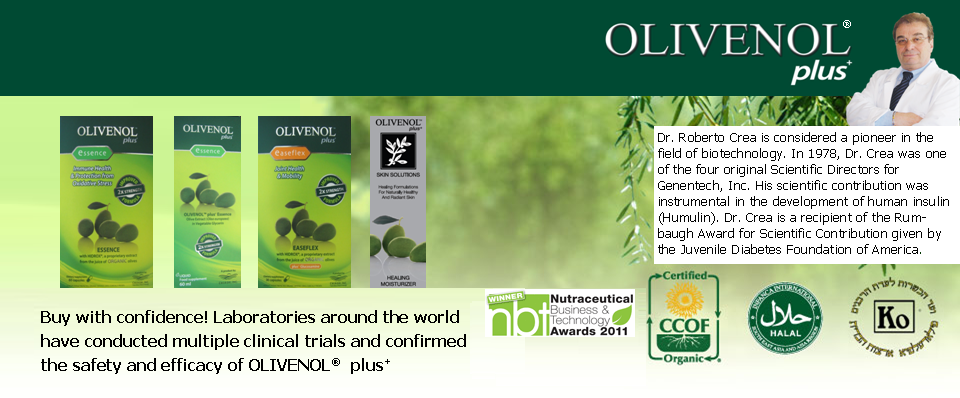Wikipedia defines Hydroxytrosol
Hydroxytyrosol
Hydroxytyrosol (3,4-dihydroxyphenylethanol; DOPET) is a phytochemical with antioxidant properties. After gallic acid, hydroxytyrosol is believed to be one of the most powerful antioxidants. Its oxygen radical absorbance capacity is 40,000 umolTE/g, which is ten times higher than that of green tea, and two times higher than that of CoQ10.[
In nature, hydroxytyrosol is found in olive leaf which is used for medical purposes, with immunostimulant and antibiotic properties[1]. It also exists in olive oil, in the form of its elenolic acid ester oleuropein and, especially after degradation, in its plain form. Oleuropein, along with oleocanthal, are responsible for the bitter taste of extra virgin olive oil. Hydroxytyrosol itself in pure form is a colorless, odourless liquid. The olives, leaves and olive pulp contain large amounts of hydroxytyrosol (compared to olive oil), most of which can be recovered to produce hydroxytyrosol extracts.
Studies have shown that a low dose of hydroxytyrosol reduces the
consequences of sidestream smoke-induced oxidative stress in rats.[2]
Hydroxytyrosol has been demonstrated to be a monoamine oxidase inhibitor (MAOI). It functions as a potent inhibitor of monoamine oxidase B.[3]
In the brain, it degrades to Homovanillyl alcohol, via COMT.
Hydroxytyrosol is also metabolite of the neurotransmitter dopamine.
Ex vivo data provide the first evidence of neuroprotective effects of oral hydroxytyrosol intake. Both, ex vivo and in vitro studies identified mitochondria as one target for hydroxytyrosol's preventive effects in the brain. [4][5]
In the brain, it degrades to Homovanillyl alcohol, via COMT.
Hydroxytyrosol is also metabolite of the neurotransmitter dopamine.
Ex vivo data provide the first evidence of neuroprotective effects of oral hydroxytyrosol intake. Both, ex vivo and in vitro studies identified mitochondria as one target for hydroxytyrosol's preventive effects in the brain. [4][5]
To read more visit:http//en.wikipedia.org/wiki/hydroxytyrosol
References
1.^ Pinelli et al. Quali-quantitative analysis and antioxidant activity of different polyphenolic extracts from Olea europea L. leaves, 2000.
2.^ Visioli F, Galli C, Plasmati E, et al. (2000). "Olive phenol hydroxytyrosol prevents passive smoking-induced oxidative stress". Circulation 102 (18): 2169–71. PMID 11056087.
3.^ Natural products and derivatives thereof for protection against neurodegenerative diseases
4.^ Schaffer S, Potsdawa M, Visioli F, et al. (2007). "Hydroxytyrosol-rich olive wastewater extract protects brain cells in vitro and ex vivo". J. Agricul. Food Chem. 55 (13): 5043–5049. doi:10.1021/jf0703710.
5.^ Schaffer S, Müller WE, Eckert GP (2010). "Cytoprotective effects of olive wastewater extract and its main constitute hydroxytyrosol in PC12 cells". Pharmacol. Res. 62 (4): 322–327. doi:10.1016/j.phrs.2010.06.004. PMID 20600919.

No comments:
Post a Comment
Note: Only a member of this blog may post a comment.